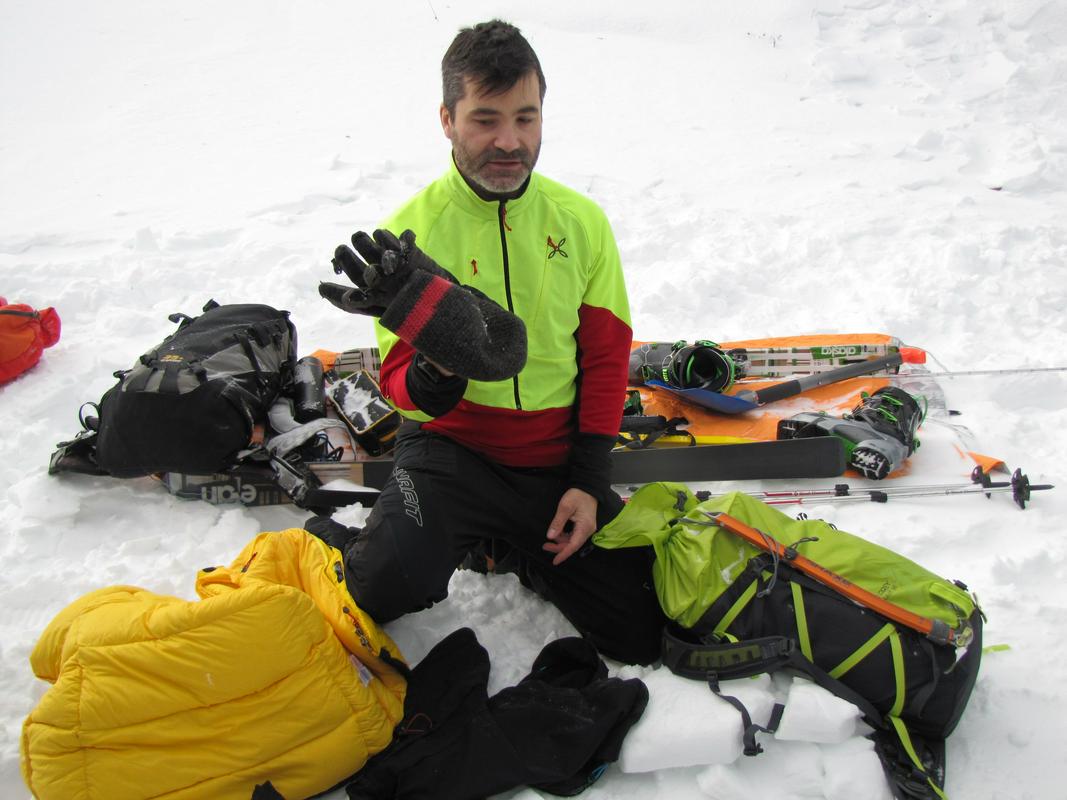Hiking in wintertime is challenging. The weather conditions are difficult, in part because of avalanches, so hikers need considerable experience. If they don’t have that, they should only head into the mountains with a PZS guide or stay at home, says Šerkezi. Lower summits are the best option for those with limited experience.
So far, we haven’t had much snow, but the mountains did see high winds in the past few weeks. “There is snow in the mountains – some 15 to 20 centimeters of it, depending on the altitude. But because of hind winds, most of this snow has been blown by the wind to form snow drifts. It has formed a crust, and we call this type of snow ‘crud,’” explains Šerkezi. Crud forms everywhere at high elevations, especially where it has been blown by the wind. When walking, the crusts can detach, which can cause hikers to fall, resulting in injuries or death. “These types of injuries are the most common in Slovenia’s mountains because of the weather conditions. Hikers need to be cautious; walking on hard, compacted snow requires both crampons and experience.” Šerkezi warns that high wind makes appropriate clothing and equipment even more crucial. “If we wear inappropriate, insufficiently warm clothing, we can quickly experience hypothermia or cold-related injuries.”
Even hiking at lower elevations requires caution. In areas where there is no snow cover, leaves may be present, and ice is frequently found underneath. Inappropriate footwear and a lack of caution can quickly result in falls, sprains, or serious injuries, cautions Šerkezi.
What kind of equipment is appropriate?
Suitable clothing, footwear, helmets, and a first aid kit are the most important elements. Clothing that is either too tight or too thin can result in hypothermia. Mountain rescue teams encounter many such cases. “People visit Velika Planina or Krvavec wearing insufficient clothing and then they encounter difficult conditions. They can quickly get lost. After 30 minutes, they get frostbite on their hands and can neither open nor close the zippers on their backpacks. Warm clothing – including a hat and gloves -- is the key,” says Šerkezi.
In wintertime, any visitors to high elevations should carry avalanche equipment: an avalanche transceiver, which helps rescuers to locate lost hikers, a shovel, and an avalanche probe, which is used to determine the exact location of the hiker once he or she is found. These three pieces of equipment are a must, even if we head to the mountains for just an hour, explains Šerkezi.
Ice axes with crampons
Walking poles are a useful tool for many hikers, but there are special rules about their use in wintertime. “Whenever we have crampons on our feet, we must hold an ice ax – not walking poles. Crampons and walking poles are a deadly combination. Because crampons have little teeth, we can quickly lose our balance and fall. If we don’t have an ice axe in our hands, we won’t be able to arrest our fall on a steep slope. We should put our folding walking poles in our backpacks,” adds Šerkezi.



































































